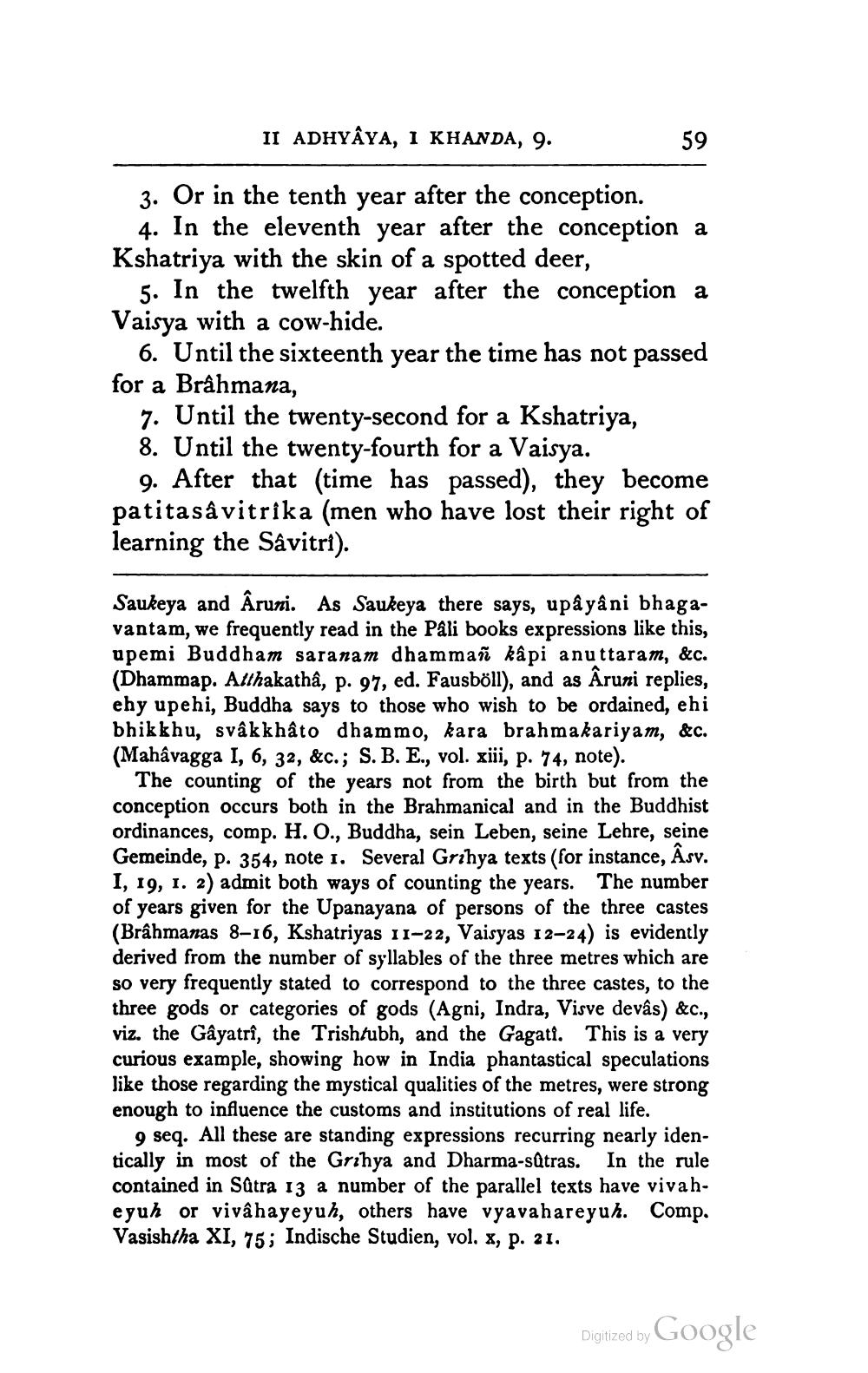________________
II ADHYAYA, I KHANDA, 9.
59
3. Or in the tenth year after the conception.
4. In the eleventh year after the conception a Kshatriya with the skin of a spotted deer,
5. In the twelfth year after the conception a Vaisya with a cow-hide.
6. Until the sixteenth year the time has not passed for a Brahmana,
7. Until the twenty-second for a Kshatriya, 8. Until the twenty-fourth for a Vaisya.
9. After that time has passed), they become patitasâ vitrika (men who have lost their right of learning the Savitri).
Saukeya and Aruni. As Saukeya there says, upâyâni bhagavantam, we frequently read in the Pali books expressions like this, upemi Buddham saranam dhammañ kapi anuttaram, &c. (Dhammap. Atthakathâ, p. 97, ed. Fausböll), and as Âruni replies, ehy upehi, Buddha says to those who wish to be ordained, ehi bhikkhu, svâk khâto dhammo, kara brahmakariyam, &c. (Mahavagga I, 6, 32, &c.; S. B. E., vol. xiii, p. 74, note).
The counting of the years not from the birth but from the conception occurs both in the Brahmanical and in the Buddhist ordinances, comp. H.O., Buddha, sein Leben, seine Lehre, seine Gemeinde, p. 354, note 1. Several Grihya texts (for instance, Asv. 1, 19, 1. 2) admit both ways of counting the years. The number of years given for the Upanayana of persons of the three castes (Brâhmanas 8-16, Kshatriyas 11-22, Vaisyas 12-24) is evidently derived from the number of syllables of the three metres which are so very frequently stated to correspond to the three castes, to the three gods or categories of gods (Agni, Indra, Visve devâs) &c., viz. the Gâyatri, the Trishtubh, and the Gagati. This is a very curious example, showing how in India phantastical speculations like those regarding the mystical qualities of the metres, were strong enough to influence the customs and institutions of real life.
9 seq. All these are standing expressions recurring nearly identically in most of the Grihya and Dharma-sQtras. In the rule contained in Sätra 13 a number of the parallel texts have vivaheyuh or vivahayeyuh, others have vyava hareyuh. Comp. Vasishtha XI, 75; Indische Studien, vol. x, p. 21.
Digitized by Google




